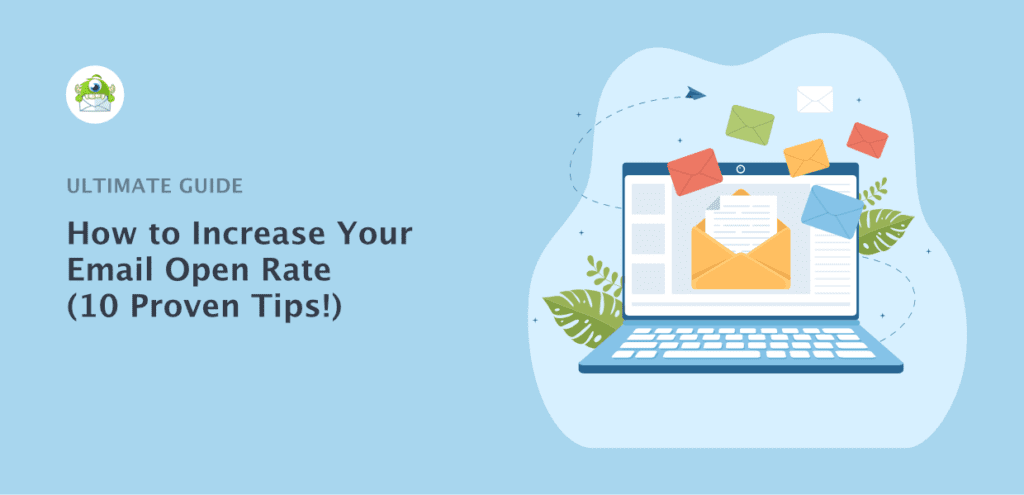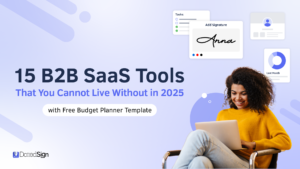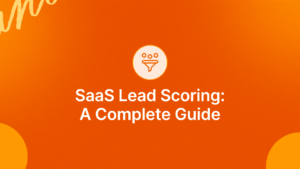In the fast-paced world of digital communication, getting your emails noticed can be a challenge. High email open rates are crucial for effective marketing and communication.
Boosting your email open rates requires a mix of strategy and understanding your audience. Think of it as crafting a message that not only reaches the inbox but also catches the eye. This is more than just avoiding the spam filter.
It’s about making your subject lines compelling, your timing perfect, and your content relevant. In this blog, we will explore practical tips to help you improve your email open rates. Whether you’re a seasoned marketer or just starting, these insights will help you connect better with your audience and get your emails opened. Let’s dive in!

Credit: dripify.io
Crafting Compelling Subject Lines
Subject lines are the first thing your readers see. They determine if your email gets opened or ignored. Crafting compelling subject lines can significantly improve your email open rates. Let’s explore some effective strategies.
Use Of Action Words
Action words create a sense of urgency. They prompt readers to act immediately. Use words like “discover,” “explore,” or “join.” These words grab attention and encourage engagement.
- Discover our new features
- Explore the latest updates
- Join our webinar now
Incorporating Personalization
Personalization makes your emails feel unique. Use the recipient’s name in the subject line. Mention their recent activity or interests. This creates a connection and increases the likelihood of opening the email.
| Generic | Personalized |
|---|---|
| Check out our new product | Hey John, check out our new product |
| Exclusive offer for you | Jane, we have an exclusive offer for you |
Creating Curiosity
Curiosity drives readers to open your emails. Use teasing phrases. Ask intriguing questions. Keep the subject line short and mysterious. This makes readers eager to know more.
- What’s new in your area?
- Can you solve this mystery?
- Find out what happens next
By focusing on these key aspects, you can craft subject lines that grab attention and improve your email open rates.
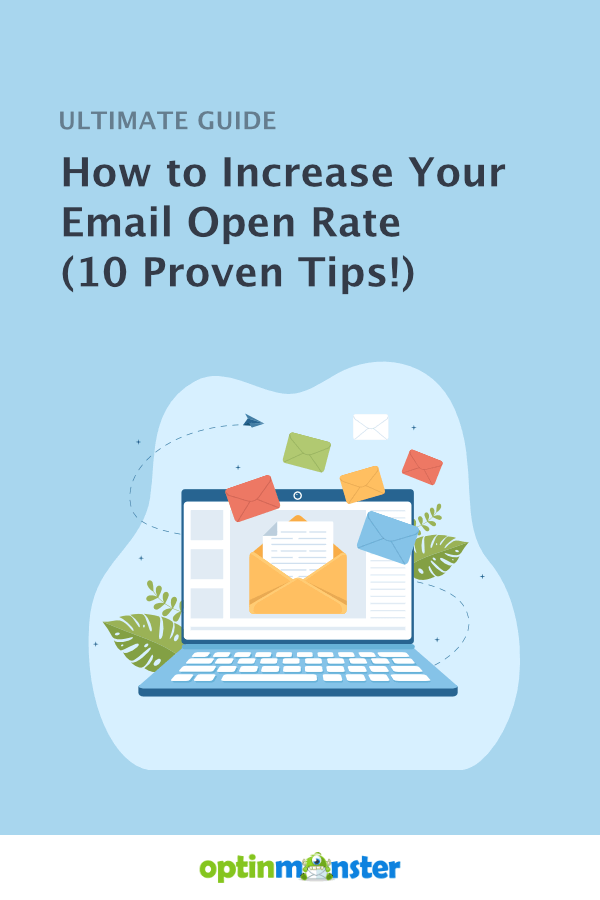
Credit: optinmonster.com
Learn more about Email Marketing with this detailed and informative content. Best Email Marketing Software for Small Businesses: Top 10 Tools
Timing Your Emails
Timing plays a crucial role in improving email open rates. Sending emails at the right time can significantly increase the chances of your email being seen and read. This section focuses on the best days, optimal times of the day, and frequency considerations for sending emails.
Best Days To Send
Choosing the best days to send emails can make a big difference. Studies show that Tuesdays and Thursdays are the most effective days to send emails. These days tend to have higher open rates compared to others. Avoid sending emails on weekends as people are often away from their inboxes.
Optimal Times Of Day
The time of day you send emails is just as important. Early morning, around 9 AM, is a great time to send emails. People usually check their emails when they start their workday. Another good time is in the afternoon around 1 PM to 3 PM. People often take a break and check their emails during this time.
Frequency Considerations
How often you send emails can affect open rates. Sending too many emails can annoy your subscribers, leading to lower open rates or even unsubscribes. On the other hand, sending too few emails can make your audience forget about you. A balanced approach is to send emails 1-2 times a week. This keeps your audience engaged without overwhelming them.
| Day | Open Rate |
|---|---|
| Monday | Moderate |
| Tuesday | High |
| Wednesday | Moderate |
| Thursday | High |
| Friday | Moderate |
| Saturday | Low |
| Sunday | Low |
Segmenting Your Audience
Segmenting your audience is a powerful strategy to improve email open rates. By tailoring your emails to specific groups, you can provide more relevant content. This makes your emails more appealing and increases the chances of them being opened. Let’s dive into three effective ways to segment your audience: demographic segmentation, behavioral segmentation, and interest-based segmentation.
Demographic Segmentation
Demographic segmentation involves dividing your audience based on demographic factors. These factors can include:
- Age
- Gender
- Location
- Income level
- Education level
For example, you can send different emails to younger and older audiences. This ensures each group receives content that resonates with them. Similarly, targeting based on location can help send region-specific offers.
Explore the depths of Email Marketing with this informative post. Free Email Marketing Tools Comparison: Top 10 Options Reviewed
Behavioral Segmentation
Behavioral segmentation focuses on how your audience interacts with your brand. This method considers:
- Purchase history
- Email engagement
- Website activity
- Past behavior
This approach allows you to send personalized recommendations based on previous purchases. You can also re-engage inactive subscribers with special offers. Behavioral segmentation can significantly boost your email open rates.
Interest-based Segmentation
Interest-based segmentation groups your audience by their interests or preferences. This can be determined through:
- Survey responses
- Browsing history
- Interaction with content
By understanding what your audience likes, you can send them content they care about. For instance, if someone frequently reads blog posts on a specific topic, you can send them related emails. This increases the likelihood of your emails being opened and read.
Personalizing Email Content
Personalizing email content can significantly improve your email open rates. By making your emails feel more relevant to each recipient, you can capture their attention and encourage engagement. Here are some effective ways to personalize your email content.
Using Recipient’s Name
Including the recipient’s name in the email subject line or greeting can make the email feel more personal. It shows that the email is specifically for them, not just a mass message. This small touch can make a big difference.
- Subject Line: “Hi John, check out our new collection!”
- Email Greeting: “Dear Sarah, we have some exciting news!”
Tailoring Content To Interests
Segment your email list based on recipients’ interests, behaviors, or past purchases. This way, you can send content that resonates with each group. For example, if someone has purchased running shoes, send them updates on new running gear.
| Interest | Content Example |
|---|---|
| Fitness | Latest workout tips and gear |
| Cooking | New recipes and cooking tools |
| Travel | Top destinations and travel hacks |
Dynamic Content Blocks
Use dynamic content blocks to show different content to different recipients within the same email. For example, you can show a special offer to new customers while showing a loyalty reward to returning customers in the same email.
- Identify key segments of your audience.
- Create different content blocks for each segment.
- Use email marketing tools to display the appropriate block to each recipient.
Dynamic content blocks allow for a personalized experience without creating multiple emails, saving time while still being effective.
Discover engaging insights on Email Marketing by reading this featured article. Email Automation Benefits for Businesses: Boost Efficiency & Growth
A/b Testing Strategies
A/B testing is a crucial method for improving your email open rates. It involves sending two different versions of an email to small segments of your audience. The goal is to determine which version performs better. By testing different elements, you can understand what resonates most with your audience.
Testing Subject Lines
Subject lines play a major role in email open rates. They are the first thing your recipients see. Test different styles, lengths, and tones. You can try formal versus casual language. Or, short and punchy versus longer descriptions. Analyze which subject lines get the most opens.
Testing Send Times
The time you send your emails can impact open rates. Test different times of the day. Morning versus afternoon. Weekdays versus weekends. Look at your audience’s behavior. Find the optimal time when they are most likely to open emails.
Evaluating Content Variations
The content inside the email matters too. Test different types of content. Images versus text-heavy emails. Short versus long content. Personalization versus generic messages. Track which content variations lead to higher engagement. Use this data to refine your email strategy.
Optimizing Email Previews
Optimizing email previews is crucial for improving open rates. A well-crafted preview can entice recipients to open your email. By focusing on key elements, you can make your emails more appealing and engaging.
Preview Text Importance
Preview text appears next to the subject line. It gives a sneak peek into the email content. A compelling preview text can increase curiosity. Keep it short and relevant. Use action words to create urgency. Avoid repeating the subject line. Make it informative and engaging.
Mobile-friendly Design
Many users check emails on their phones. Ensure your email design is mobile-friendly. Use a responsive design that adjusts to different screen sizes. Keep the layout simple and clean. Use larger fonts for easy readability. Test your emails on various devices. This ensures a consistent experience for all users.
Avoiding Spam Triggers
Emails marked as spam never reach the inbox. Avoid using words that trigger spam filters. Do not use all caps in subject lines. Limit the use of exclamation marks. Avoid too many images or links. Ensure your email content is valuable and relevant. This helps in building trust with your audience.
Engaging Email Copy
Engaging email copy is critical for improving your email open rates. If your emails are boring, readers will not open them. Let’s focus on writing clear and concise messages, incorporating storytelling, and using persuasive language. These techniques can make your emails more compelling and engaging.
Writing Clear And Concise Messages
People receive many emails each day. They don’t have time for long messages. Keep your emails short and to the point. Use simple words. Avoid jargon. Each sentence should be easy to understand. This helps keep your reader’s attention.
Use bullet points to break up text:
- State the main idea clearly.
- Use short sentences.
- Focus on one topic per email.
Short paragraphs are also important. Whitespace makes your email easier to read. Aim for brevity without losing your message’s essence.
Incorporating Storytelling
People love stories. They make your emails more interesting. Use a simple story to explain your point. Start with a hook to grab attention. Describe a problem. Show how your product or service solves that problem.
Here’s a structure you can use:
- Introduce the character (your customer).
- Describe their problem.
- Present your solution.
- End with a positive outcome.
Stories make your email relatable. They help readers connect with your message.
Using Persuasive Language
Persuasive language encourages action. Use strong verbs and action words. Instead of saying “check out our new product,” say “discover our new product.” This is more engaging.
Here are some tips for persuasive language:
| Weak | Persuasive |
|---|---|
| Try | Experience |
| Learn | Master |
| Help | Achieve |
Use questions to provoke thought. For example, “Do you want to save money?” This gets the reader thinking about your message.
Incorporate calls to action (CTAs). These tell the reader what to do next. Use phrases like “Sign up now” or “Get started today.”
Engaging email copy can improve your email open rates. Use clear and concise messages, storytelling, and persuasive language. This makes your emails more interesting and effective.
Analyzing Performance Metrics
To improve email open rates, you must analyze performance metrics. Understanding these metrics helps you identify what works and what doesn’t. Here, we dive into essential metrics for your email campaigns.
Open Rate Analysis
Open rate is the percentage of recipients who open your email. A low open rate means your subject lines need improvement. Consider A/B testing different subject lines. Use personalization and emojis to grab attention. Analyze the best times to send emails. Time of day and day of the week can impact open rates.
| Time of Day | Open Rate |
|---|---|
| Morning (9 AM – 11 AM) | 20% |
| Afternoon (1 PM – 3 PM) | 18% |
| Evening (6 PM – 8 PM) | 25% |
Track open rates over different campaigns. Look for patterns. Adjust your strategies based on data.
Click-through Rate Insights
Click-through rate (CTR) shows the percentage of recipients who clicked on links in your email. A low CTR indicates your content or call-to-action (CTA) may not be compelling.
- Use clear and concise CTAs.
- Place CTAs above the fold.
- Use buttons instead of text links.
Analyze which links get the most clicks. This helps you understand what interests your audience.
Conversion Rate Tracking
Conversion rate is the percentage of recipients who complete the desired action. Examples include making a purchase or signing up for a webinar.
- Set clear goals for each email campaign.
- Track conversions using Google Analytics or similar tools.
- Compare conversion rates across different campaigns.
Understand which emails drive the most conversions. Refine your strategies based on this data.
Building Trust And Credibility
Building trust and credibility with your email recipients is crucial for improving open rates. When subscribers trust you, they are more likely to open your emails. Credibility ensures that your audience sees you as a reliable source of information. This section will provide practical tips on building trust and credibility.
Maintaining Consistency
Consistency is key in email marketing. Use the same sender name and email address for all communications. This helps recipients recognize your emails quickly. Send emails at regular intervals. If you send a weekly newsletter, stick to that schedule. Consistent timing builds anticipation and trust.
Providing Value
Always offer value in your emails. Share useful content, tips, or special offers. Make your emails worth opening. When recipients see value in your emails, they will look forward to them. Ask yourself, “What benefits do my subscribers get from this email?” Ensure each email answers that question.
Avoiding Over-promotion
Too much promotion can turn recipients off. Balance your content with informative and promotional material. Aim for an 80/20 rule: 80% informative, 20% promotional. This keeps your audience engaged and not feeling pressured to buy. Respecting your audience’s inbox builds trust.
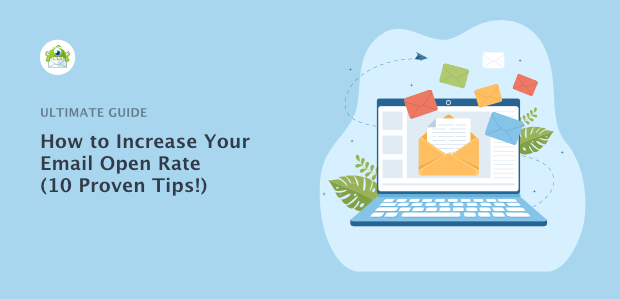
Credit: optinmonster.com
Frequently Asked Questions
How Can I Improve Email Subject Lines?
To improve email subject lines, keep them short and engaging. Use action words and personalize when possible. Test different variations to see what works best.
What Is The Best Time To Send Emails?
The best time to send emails is usually mid-week, around 10 AM. However, testing different times can help find the optimal schedule for your audience.
How Important Is Email Segmentation?
Email segmentation is crucial for improving open rates. By targeting specific groups, you can send more relevant content, increasing engagement and open rates.
Why Is Personalization Important In Emails?
Personalization makes emails feel more relevant to the recipient. Using the recipient’s name or tailoring content to their interests can significantly boost open rates.
Conclusion
Improving email open rates is crucial for effective communication. Follow these tips consistently. Craft compelling subject lines. Personalize your emails. Optimize send times. Keep your content relevant and engaging. Always test and analyze your results. Small adjustments can lead to big improvements.
Happy emailing!

